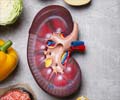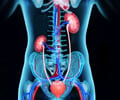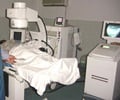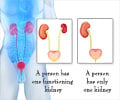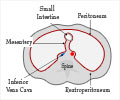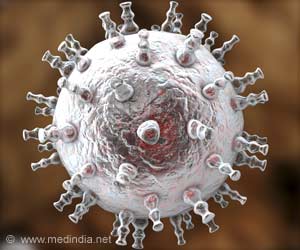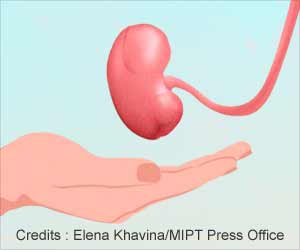The metabolite produced by the kidneys offered protection against key elements of diabetic kidney disease, all while maintaining blood sugar levels unaffected.

Endogenous adenine mediates kidney injury in diabetic models and predicts diabetic kidney disease in patients
Go to source). The new discovery has the potential to enable earlier diagnosis and intervention of kidney failure condition. The work has been carried by researchers from The University of Texas Health Science Center at San Antonio (also called UT Health San Antonio) reported Aug. 24 in the Journal of Clinical Investigation.
‘A minor molecule capable of inhibiting the primary pathway responsible for the body's natural production of adenine successfully lowered kidney adenine levels in mice afflicted with type 2 diabetes. #diabetes #adenine #kidneyfailure’





The study results are significant because until now, the most important marker for kidney disease has been protein (or albumin) in the urine. Up to half of diabetes patients who develop kidney failure never have much protein in their urine. As 90% of patients with diabetes (more than 37 million patients in the U.S.) remain at increased risk despite low levels of albumin in their urine, this study has widespread consequences. It is the first study to identify these patients at an early stage by measuring this new causative marker in the urine.
Groundbreaking Discovery Enables Early Prediction of Kidney Failure Risk
The finding paves the way for clinic testing to determine — five to 10 years before kidney failure — that a patient is at risk, said the senior study author, Kumar Sharma, MD. Sharma is professor and chief of nephrology at UT Health San Antonio, where he is the founding director of the Center for Precision Medicine. He is also vice chairman for research in the Department of Medicine in the Joe R. and Teresa Lozano Long School of Medicine.“The study is remarkable as it could pave the way to precision medicine for diabetic kidney disease at an early stage of the disease, Sharma said.”
The researchers studied more than 1,200 patients with diabetes across three international research cohorts. The Chronic Renal Insufficiency Cohort (CRIC) study included African American, Hispanic and Caucasian participants in the U.S. A separate study was in the American Indian population. The team also evaluated an Asian cohort of mostly Chinese, Asian Indians and Malay populations in a study based in Singapore.
“In each study there was the same pattern, that high urine adenine was associated with higher risk of kidney failure,” Sharma said. “We are truly grateful for all the participants in this global study, and I would like to thank all of the investigators and research teams who were part of this collaborative effort.”
UT Health San Antonio is one of few centers in the U.S. perfecting a technique called spatial metabolomics on kidney biopsies from human patients. This technique enables researchers to determine the locations of adenine and other small molecules in kidney tissues. The kidney biopsies were provided from academic centers throughout the United States as part of the Kidney Precision Medicine Project, a national collaborative and innovative program supported by the National Institute of Diabetes and Digestive and Kidney Diseases (NIDDK).
Advertisement
Metabolites are small molecules that the body produces based on metabolism. They make cells go in a healthy way or in a disease pattern, Sharma said.
Advertisement
The finding that high levels of adenine were also associated with all-cause mortality in the study participants suggests that the metabolite is affecting other parts of the body, as well, Sharma said.
Many patients with diabetes know they’re at risk of kidney disease, but if they don’t have protein in their urine, they think they are protected, he said.
“They could be feeling a false sense of security that there is no kidney disease occurring in their body,” Sharma said. “But in fact, in many cases it is progressing, and they often don’t find out until the kidney disease is pretty far advanced. And at that time, it is much harder to protect the kidneys and prevent dialysis.”
Once a patient needs dialysis, he or she must have a fistula or catheter placed and go on a dialysis machine three times a week, four hours at a time to clean the blood.
“The death rate is very high, especially in patients with diabetes,” Sharma said. “There is about 40% mortality within five years in patients with diabetes and kidney failure.”
Although treatments to protect against diabetes and blood pressure are improving, they only push the envelope a little bit, Sharma said, in that patients still have progressive kidney disease and kidney failure, but they are afforded more time before they reach that endpoint. The measurement of urine adenine is difficult; however, the team at the Center for Precision Medicine at UT Health San Antonio has developed a robust and sensitive method to measure urine adenine in patients.
“What we’re hoping is that by identifying patients early in their course and with new therapies targeting adenine and kidney scarring, we can block kidney disease or extend the life of the kidney much longer,” Sharma said.
Reference:
- Endogenous adenine mediates kidney injury in diabetic models and predicts diabetic kidney disease in patients - (https://www.jci.org/articles/view/170341)



